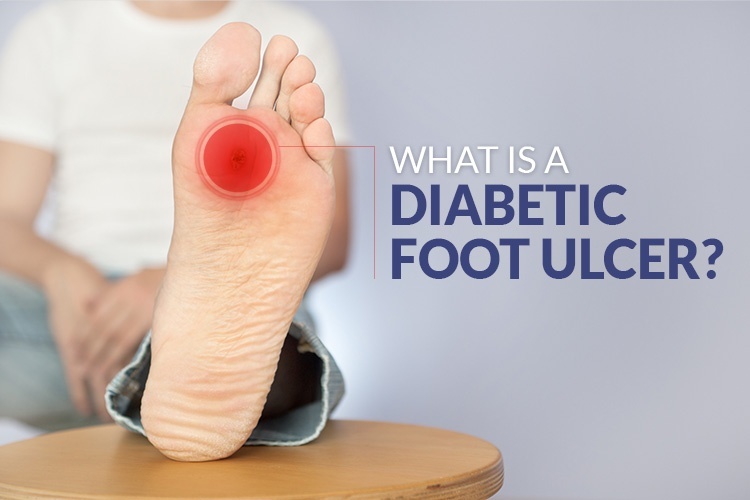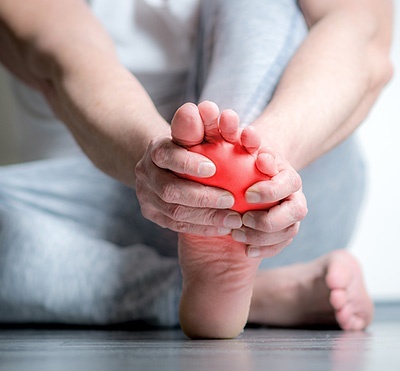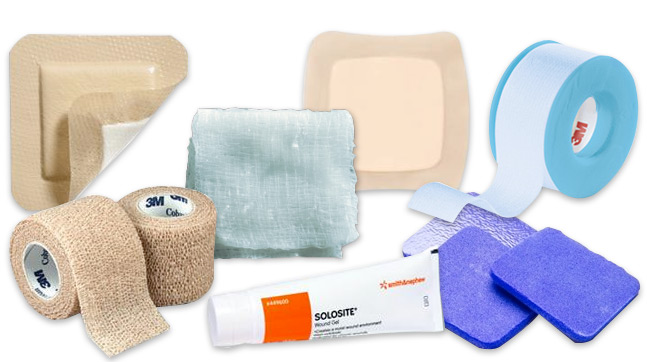What is a Diabetic Foot Ulcer?
This post was reviewed by our Director of Clinical Excellence and Oversight.

According to the University of Michigan School of Medicine, foot ulcers come with scary consequences: 14% to 24% of people with diabetes who develop a foot ulcer ultimately have an amputation. As frightening as those statistics are, research has shown that prevention and treatment of foot ulcers is possible. Let’s take a look at what causes diabetic foot ulcers and explore some common prevention and treatment methods.
What Causes Diabetic Foot Ulcers?
The cause of a diabetic foot ulcer varies depending on the type of ulcer that develops. According to the University of California San Francisco Department of Surgery, there are three main categories of diabetic foot ulcers:
Neuropathic Ulcers
Approximately 90% of diabetic foot ulcers are neuropathic ulcers. Neuropathic foot ulcers are caused by a condition called diabetic peripheral neuropathy. Diabetes can damage your nerves, which means that sensation in your feet could become limited. When you’re unable to feel your feet, you might not notice the pain from a scrape or burn. When these injuries are left untreated, an ulcer can develop.

Ischemic Ulcers
Ischemic ulcers are caused by peripheral artery disease (PAD). This is a disease that causes blood circulation to become restricted. Oxygen, glucose, and critical nutrients that are needed in your body are substantially reduced. PAD Is common in those with diabetes and can cause diabetic foot ulcers.
Neuroischemic Ulcers
Neuroischemic ulcers are caused by a combination of PAD and neuropathic ulcers. Both of these conditions have been known to occur in diabetes patients at the same time.
Risk Factors
Anyone with diabetes is at risk for a foot ulcer, but if you have any of the following risk factors, it is important to be particular vigilant:
- heart disease
- kidney disease
- obesity
- tobacco use (inhibits blood circulation)
Another thing to be aware of is that diabetic foot ulcers are most common in older men.
Early Warning Signs
It is important to treat diabetic foot ulcers as soon as possible. If an ulcer becomes infected, it can lead to severe complications, including potential amputation. Check your feet regularly for ulcers, and be on the lookout for the following warning signs:- Drainage or wetness in your sock
- Redness or swelling on your foot
- Any foot odor
Being aware of these common signs can help you and your doctor treat ulcers quickly.

Treatment and Prevention of Foot Ulcers
When it comes to diabetic foot ulcers, the best treatment is prevention. The sooner you can identify a potential problem and stop it from getting worse, the better the outcome will be. Here are a few things you can do to stop an ulcer from forming according to the International Journal of Preventive Medicine:
- Keep your blood sugar level in a healthy range
- Maintain a healthy diet
- Reduce high blood pressure
- Quit smoking
- Wash and dry feet daily
- Wear shoes both inside and outside
- Always wear closed-toe shoes
- Always wear socks and change them daily
- Have toenails maintained by a professional
- Use lubricants on dry feet
- Have a yearly foot exam
Why Home Care Delivered?
At Home Care Delivered our purpose is to help our customers live with confidence and dignity. We understand how important it is for our customers to have accurate information about the health conditions they may be living with and how critical it is for their medical supplies to be delivered on time every time.
We aim to make getting your insurance-covered medical supplies as easy as possible. Our customer care representatives can handle the insurance paperwork and our 98.6% satisfaction rate means you can leave the stress of driving to the store, waiting in line, and hoping the store takes your insurance behind. Call us today to see how easy it is to get insurance-covered medical supplies delivered to your door. We look forward to getting to know you and providing you with the 5-star service you deserve.

Disclaimer:
Unless otherwise noted, the recommendations in this document were obtained from the sources indicated. Be advised that information contained herein is intended to serve as a useful reference for informational purposes only. HCD cannot be held responsible for the continued accuracy of or for any errors or omissions in the information. All trademarks and registered trademarks are the property of their respective owners.
Get Insurance-Covered Wound Supplies
Accurate Orders | We Handle the Paperwork

